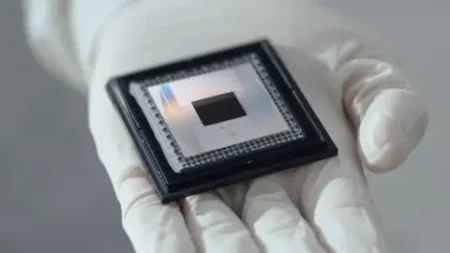Ilkka Paananen, the chief executive officer of Supercell, the renowned Finnish gaming company, is making strides towards redefining the limits of mobile gaming. In a recent conversation, Paananen articulated his vision for the future of the mobile gaming industry, emphasizing a need for bold risks and innovative thinking. With an approach that combines creativity and ambition, Supercell aims to shake up the industry landscape which he perceives to be somewhat stagnant. His assertion that “We need to take bigger risks” encapsulates the essence of his commitment to propelling Supercell and, by extension, mobile gaming into uncharted territories.
Supercell is already a formidable player in the mobile gaming arena, boasting blockbuster titles like “Clash of Clans” and “Brawl Stars,” which collectively generated over a billion dollars in revenue last year. However, Paananen believes that reliance on established successes will not be sufficient for the company’s growth or the industry at large. He notes that for mobile games, innovation cannot merely be about releasing sequels or updates; there should be a continuous quest for new gaming experiences that captivate players in unforeseen ways. This mentality has led him to extensively invest in new games, expand the workforce, and spawn new game studios, empowering developers to envisage and create what mobile games might evolve into as far ahead as 2030.
The mobile gaming market faces unique challenges; Paananen points out a concerning statistic: 60% of mobile gaming time last year was dedicated to games that were at least six years old, while fresh titles constituted a mere 10% of the overall playtime. He sheds light on the harsh reality of escalating competition for user attention—not only against rival games but also against other digital entertainment avenues such as social media and streaming services. With so many alternatives vying for players’ free time, simply releasing games is no longer enough to guarantee traction and engagement.
One challenge underlying the production of new games is the rising cost. The simplicity and affordability that characterized early mobile games have long since vanished; creating modern mobile games requires significant investment. Paananen explains that, partly due to technological advancements that allow for more sophisticated gameplay, the expectation from consumers has drastically increased. The bar for quality has been raised, necessitating meticulous planning and broader resource allocation to ensure that new releases can captivate audiences and stand out in a crowded marketplace.
Despite the setbacks, including the below-expectation performance of their latest title “Squad Busters,” which, while initially promising, has struggled to maintain player engagement, Paananen remains optimistic. He recently appointed a new general manager for the title in order to bring about substantial changes based on player feedback. Moreover, Supercell is experimenting with new campaigns like “Mo.co,” a monster-hunting game launched exclusively to invited players, demonstrating their willingness to take unconventional approaches to game releases.
However, not all industry observers are aligned with the traditional release strategy Supercell has historically utilized. Neil Long, a veteran game journalist, points out the increasingly pervasive practice of iterative game development – as opposed to grand launches – allowing developers to adapt games based on player preferences and trends. This method emphasizes flexibility, build-out development, and real-time adjustments to game mechanics.
Moreover, as the technology landscape changes, Paananen envisions artificial intelligence transforming game development and overall user experience. Though still in the early stages, he illustrates the potential of AI to create fundamentally new types of games or experiences, which could be a game-changer for Supercell’s future endeavors. This forward-thinking perspective, coupled with a willingness to explore innovative frameworks for game development, positions Supercell not only to navigate the current gaming terrain but to potentially redefine it.
In Paananen’s mind, the ultimate question remains: “Why would people play this game in five or ten years?” This focus on longevity and draw can set Supercell apart, aiming to create games that not only make an immediate impact but also foster enduring engagement—a philosophy that echoes their ambition to stand shoulder to shoulder with industry giants like Nintendo. The journey ahead for Supercell promises excitement and possibility, woven into an ever-evolving narrative within the broader landscape of gaming.










